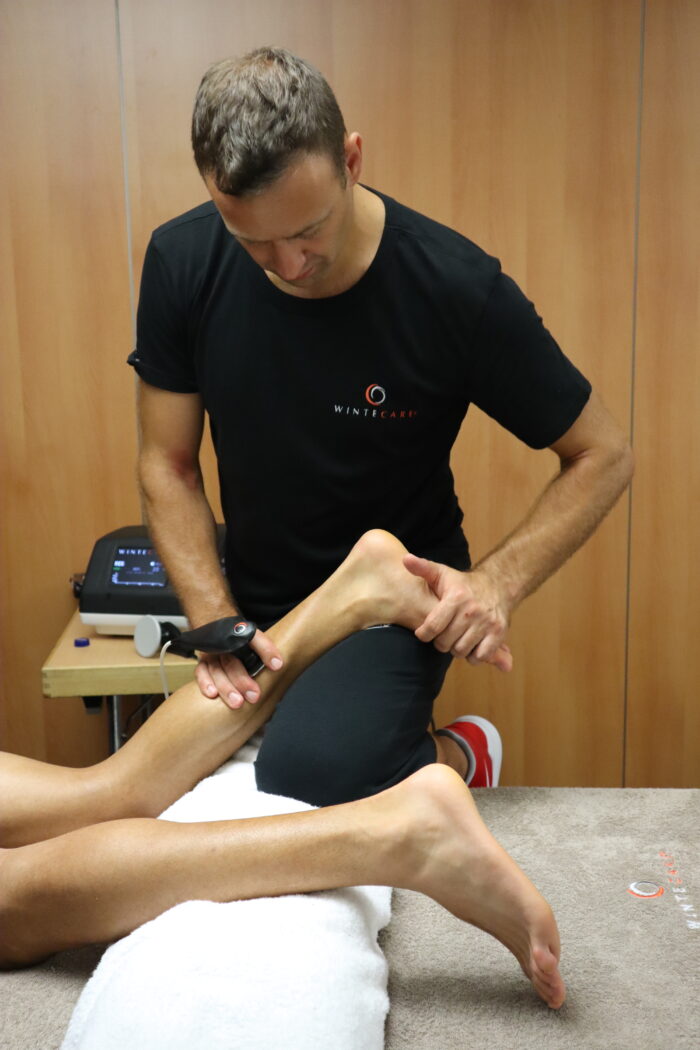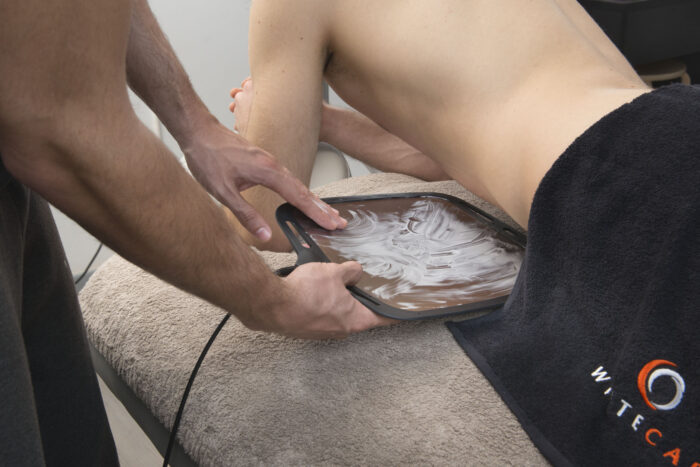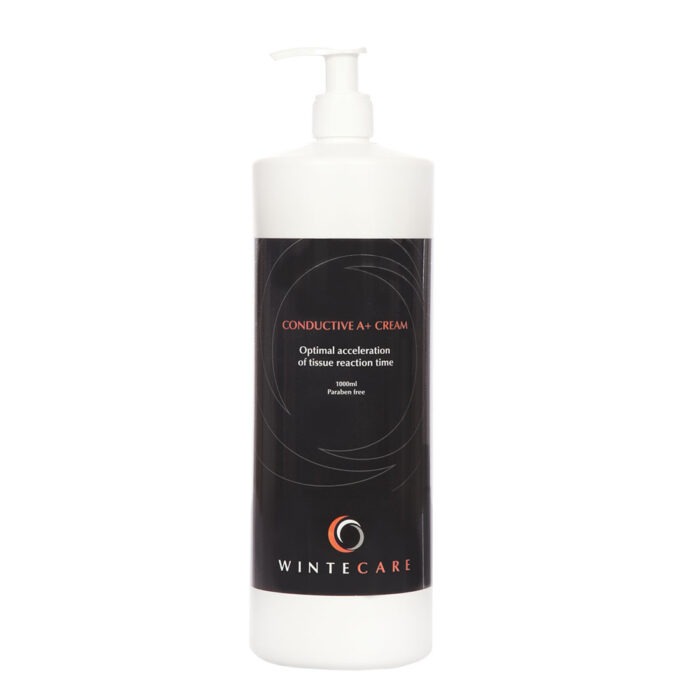Electrode or plate that burn when using a tecar device? Find out how to solve the problem starting with conductive cream …
This problem not only generates discomfort for the patient, but also leads the operator to have to constantly move the electrode, thus losing the possibility of concentrating the energy transfer on the specific point to be treated.
Sometimes you need to switch devices to solve the root problem but:
Is there anything more immediate that allows at least to reduce these unwanted effects? The answer is yes!
Relationship between heat and electromagnetic fields
The overheating of the contact surfaces between the electrode / plate and body tissue depends on a phenomenon well known in physics as the dissipation of power in heat.
When an electromagnetic field is applied to a conduction medium that opposes a resistance, as in the case of a tecar device applied to the human body, part of the energy transferred to the body is transformed into heat.
Other examples of dissipation that we encounter on a daily basis are the resistance of a light bulb that heats up when we turn on the light or the battery of a phone that overheats when we charge it or when we use applications that require a lot of energy.
In the therapeutic field, the quantity of the phenomenon of dissipation and its distribution within the tissue have a HUGE impact on the clinical outcome as they intervene in a very relevant way on the endogenous responses induced by the therapy within the tissues and determine their localization. .
The dissipation, or rather the amount of power that is transformed into heat, is proportional to the electrical resistance opposed by the tissue in contact with the electrode. A greater resistance will determine a greater temperature increase on the part of the tissues crossed by the electromagnetic field generated by our instrument.



Why the plate or the electrode burn?
This undesirable phenomenon occurs when the resistance of the tissue in contact with the plate and electrode is excessive compared to the amount of current we are transferring with our instrument.
Is there a way to reduce this phenomenon without decreasing the amount of energy we are transferring?
It is necessary to lower the resistance opposed by the skin tissue by applying a highly conductive means to the skin: the conductive cream.
But ATTENTION … not all conductive creams are the same!
The chemical composition of the cream can make a huge difference on the final result, to the point that some creams can reduce overheating near the electrode / plate while other creams can increase it.
The key point is a physical characteristic, namely electrical conductivity, the opposite of electrical resistance.
The more conductive the cream that is placed between the electrode / plate and the skin, the fewer skin thermal effects will be encountered.
It is surprising how with the same tecar device it is possible to obtain different thermal results based on the type of conductive cream that is used.
One way to compare two conductive creams is to compare their conductivity. To do this, just a normal electric tester and two small containers of the same size and shape. We fill the first container with one of the two creams we want to test and the second with the other cream. The quantity must be the same. To measure conductivity, simply immerse the 2 tester probes inside the cream vertically until they touch the bottom of the container. The two probes must be placed at the same distance for both the first and second cream. By comparing the two OHM values that we get from the tester we will be able to know which cream is more conductive: the one with the lowest value is the best.
But how do we evaluate the conductivity of a cream when we don’t have an electrical tester?
If your device measures the impedance of the tissue (if it does not, you may have a problem with the objectivity of the treatment), you can do a test by placing the electrode and plate in contact with the body at a certain distance, marking exactly the point of contact in so as to replicate it both with the first cream and with the second. Taking care to verify that the contact surface is the same in both conditions, we will see which of the two creams makes our device register a lower impedance. That will be the best cream. Remember to clean the skin well before applying the cream so that there are no distortions in the measure.
Finally, there is an even simpler but less objective way:
- Let’s define a potency at which we want to test the two creams being compared (if your device does not provide the potency you may have important limits when you want to objectify your treatment).
- We choose the electrode with which we want to make the comparison.
- Let’s define a time (a few minutes).
- Let’s pay attention to how much heat develops in the portion of the fabric in contact with the electrode.
- The cream that causes the portion of tissue in contact with the electrode to “heat up” less is the best one.
Exact! The cream that “heats” the surface the least is the best!
But how? Doesn’t the tecar really have to do with the increase in temperature?
ATTENTION: first of all, temperature and heat are two different things. Furthermore, a good tecar can ALSO increase the temperature, but this is not the only effect that the instrument is able to generate. In addition, excessive skin overheating is an indicator of inefficiency in energy transfer! In fact, much of the energy that you are trying to transfer to the tissue “dissipates” in surface heat without reaching the deep layer of tissue.
So: pay attention to the cream you use!
If you are a therapist, use a tecar tool everyday and want to make the most of its potential, make sure you use the cream with the best conductivity possible.
Try A + Conductive Cream – the highest conductivity cream you can find around. Regardless of the tecar or diathermy instrument you are using, you can significantly reduce the phenomenon of skin overheating compared to any other type of cream you are using now.
Click on the button to watch the cream comparison video and request Conductive A + Cream!





